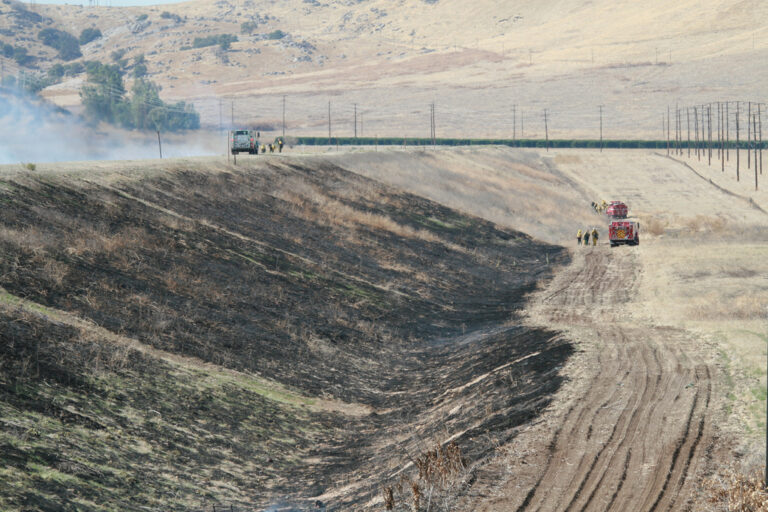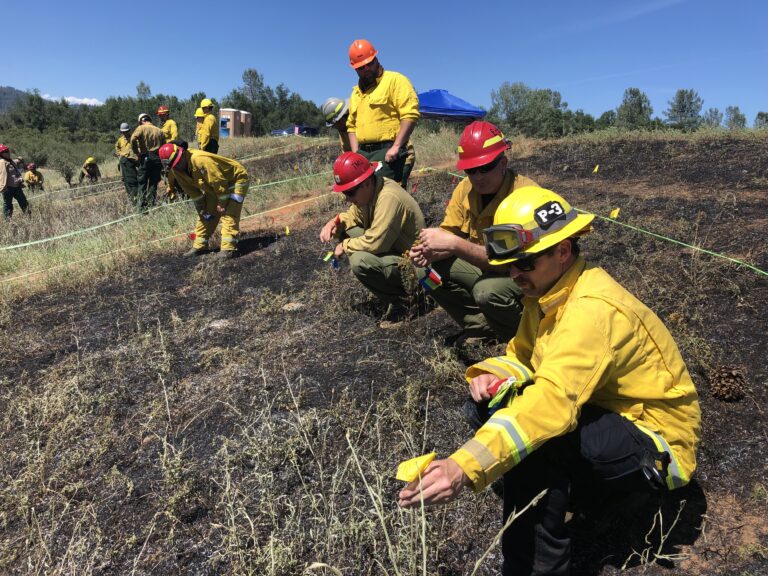Failed wildfire policy
hikes cities’ housing, energy costs
By Kenneth Schrupp | June 7, 2024
Two years of rain have finally ended California’s drought, leaving reservoirs full and hills in bloom. However, the prospect of new growth feeding future wildfires looms over a state where the costs of damage and insurance from wildfire risks raise the cost of everything from electricity to housing, and could even threaten the state’s credit rating. Better forest management is the only way to reduce the risk of wildfires that threaten property, human life and the state’s economic future.
The chaparral ecosystem that characterizes much of California is naturally defined by winter rains that produce spring blooms that dry out over the summer and feed fall fires. These fires leave nutrients for post-rain blooms in a cycle that dominated California until European development.
When Europeans arrived in California, they remarked that the land appeared like a “well-tended garden.” Natural fires and indigenous controlled burns helped “forests flourish” and maintained “forest structure and biodiversity.”

Without regular fires, dense, dead-brush-filled forests limit the growth of fewer but larger, more fire-resistant trees that limit erosion and maintain moisture between rains, making future fires worse and increasing dangerous mudslides when rain does come. With current California policies emphasizing fire-suppression over fire risk management, both the ecosystem and humans suffer.
As California focused on suppressing growing fires without managing forests, the state’s system of insurance regulation also suppressed fire insurance rates, leaving insurers with no option but to accept losses or leave the state.
To end the insurer exodus, California is approving rate increases including a recent 15% rate hike just this year alone. Remaining insurers are typically only doing so for existing policies, leaving those seeking new policies without many market options. This has led to a flood of applications to the California FAIR Plan, the state’s insurer of last resort, which now covers seven times as much property as it did in 2018.
FAIR (Fair Access to Insurance Requirements) coverage only insures a limited amount of property and costs around $3,200 per year. The statutes that created FAIR leave it unable to pass on the costs of reinsurance – coverage for the insurance company in the case damage exceeds available reserves. As a result, FAIR warns subscribers may pay a $1,000 assessment any time there is a major wildfire.
Unmanaged forests not only increase costs for owners of existing property, but those seeking to develop more housing. While the FAIR plan was expanded to cover up to $20 million per commercial building, this means that larger buildings in areas other insurers no longer cover cannot be built, as bank loans typically require fire insurance. Some of the highest-demand areas in California overlap with fire zones, making new developments costlier and smaller, if at all possible.
Fire insurance is so expensive in California that global credit ratings agencies warn outmigration driven by insurance costs could lead to public finance “credit quality deterioration.” To relieve the state’s outmigration and 4.5-million home housing shortage, officials need to make forest management a top priority to push back the state’s fire-zone boundaries. They must go beyond the immediate short-term “fix” of allowing FAIR to pass on the cost of reinsurance and allowing insurers to raise rates to cover their risks for existing customers.
The impact of fire-related costs extends even to electricity. According to the California Public Utilities Commission, wildfires are one of the main causes of energy price increases. Between January 2021 and 2024, the state’s three largest utilities have raised rates by 63%, 52% and 13% respectively, to $0.40, $0.33, and $0.36 per kilowatt hour. The U.S. average is $0.16 per kWh for residential consumers.
Energy costs affect everything from the cost of doing business to the cost-benefit calculus for electric vehicles. Should electricity rates rise to $0.50 per kWh – or the cost the CPUC says is the point where filling up a car with gas equals the cost of filling an EV with electrons – EV benefits for consumers would evaporate. The state wants to direct more Californians to EVs and even electric heating and cooking systems to reduce emissions. Keeping energy costs down is key to reaching the state’s goals.
Thus, to make housing and energy more affordable, California must invest in and allow proper forest management, whether through controlled burns, physical removal of dead brush, or even sustainable timber harvesting.

With approximately 1 million acres of state-managed forests at “high risk from uncontrolled wildfire,” and the U.S. Forestry Service estimating treatment costs of approximately $1,000 per acre, it would cost California approximately $1 billion to clear its current state-managed forest backlog. Though California aims to treat approximately half a million acres per year, the state appears to be treating just over 100,000 acres per year, with 105,531 acres in FY 2022-2023, meaning the state has an approximately 10-year backlog.
However, the U.S. Forest Service, which manages 58% of California forests and clears approximately 200,000 acres per year, estimates a total of 15 million acres of California forests are in need of treatment. This means with the current combined federal and state government treatment of 325,000 acres, it would take 46 years to clear the state’s at-risk forests. This rate of treatment simply isn’t enough to keep up with new overgrowth.
According to research from the University of Chicago, California’s 2018 wildfires alone cost $149 billion, which means even if treatment of at-risk forests cost many times more than USFS estimates, it would still be cheaper to simply treat all at-risk forests now than allow for just one bad fire season. Yet Gov. Gavin Newsom adopted a $2.8 billion wildfire plan in 2022 with funding set to last four years, but has since proposed using those same funds over five years and cutting overall funding by $100 million.
While state and federal governments spend hundreds of billions of dollars supporting de-carbonization efforts, wildfires are causing these carbon reductions to go up in smoke. California’s 2020 wildfires released twice as much carbon dioxide as the state’s previous 18 years of emissions reductions. When one combines the direct economic costs, insurance (and thus property, energy and other cascading costs) and, if one is so inclined, the emissions costs of wildfires, the rationale is obvious for investing state funds in forest management.
Once the backlog is clear, the state could use too-often-maligned single family homes as buffers around high-density, high-value corridors to better protect the state’s cities and essential infrastructure. Harvesting lumber from overgrown forests could provide more of the materials needed to expand the state’s limited housing supply, protect new and existing homes, and cut the insurance, fire mitigation, property and energy costs weighing upon the state and its cities.
Kenneth Schrupp is the California reporter for The Center Square. His commentary and analysis have been published by Newsweek and RealClearPolitics.

